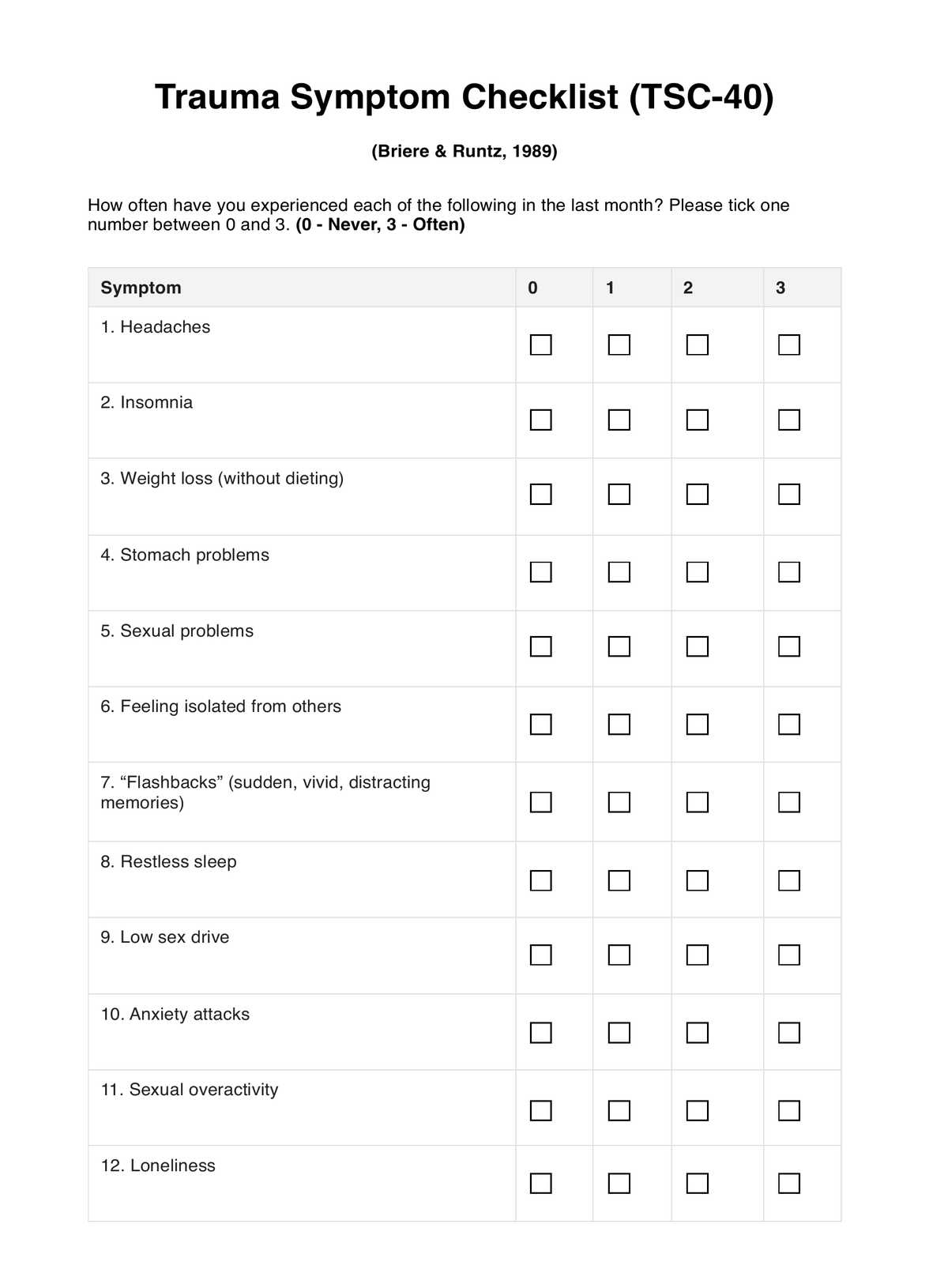No. It is a research tool. It’s not meant to analyze respondents for potential PTSD or anything officially. Under no circumstance should this be used to diagnose people with PTSD.

Trauma Symptom Checklist (TSC-40)
Learn about the Trauma Symptom Checklist created by John Briere, Ph.D. and Marsha Runtz, Ph.D. Download a free PDF template here.
Trauma Symptom Checklist (TSC-40) Template
Commonly asked questions
Tools like the Potential Stressful Events Interview (PSEI), Trauma History Questionnaire (THQ), and Moral Injury and Distress Scale (MIDS) can be used in a comprehensive assessment of a traumatized patient.
You may download this tool and use it to reflect on your experiences and symptoms of trauma and post-traumatic stress, but please make sure not to self-diagnose yourself with PTSD. If you think your scores are concerning, please see a professional so that you can be properly diagnosed and get the treatment you need.
EHR and practice management software
Get started for free
*No credit card required
Free
$0/usd
Unlimited clients
Telehealth
1GB of storage
Client portal text
Automated billing and online payments











